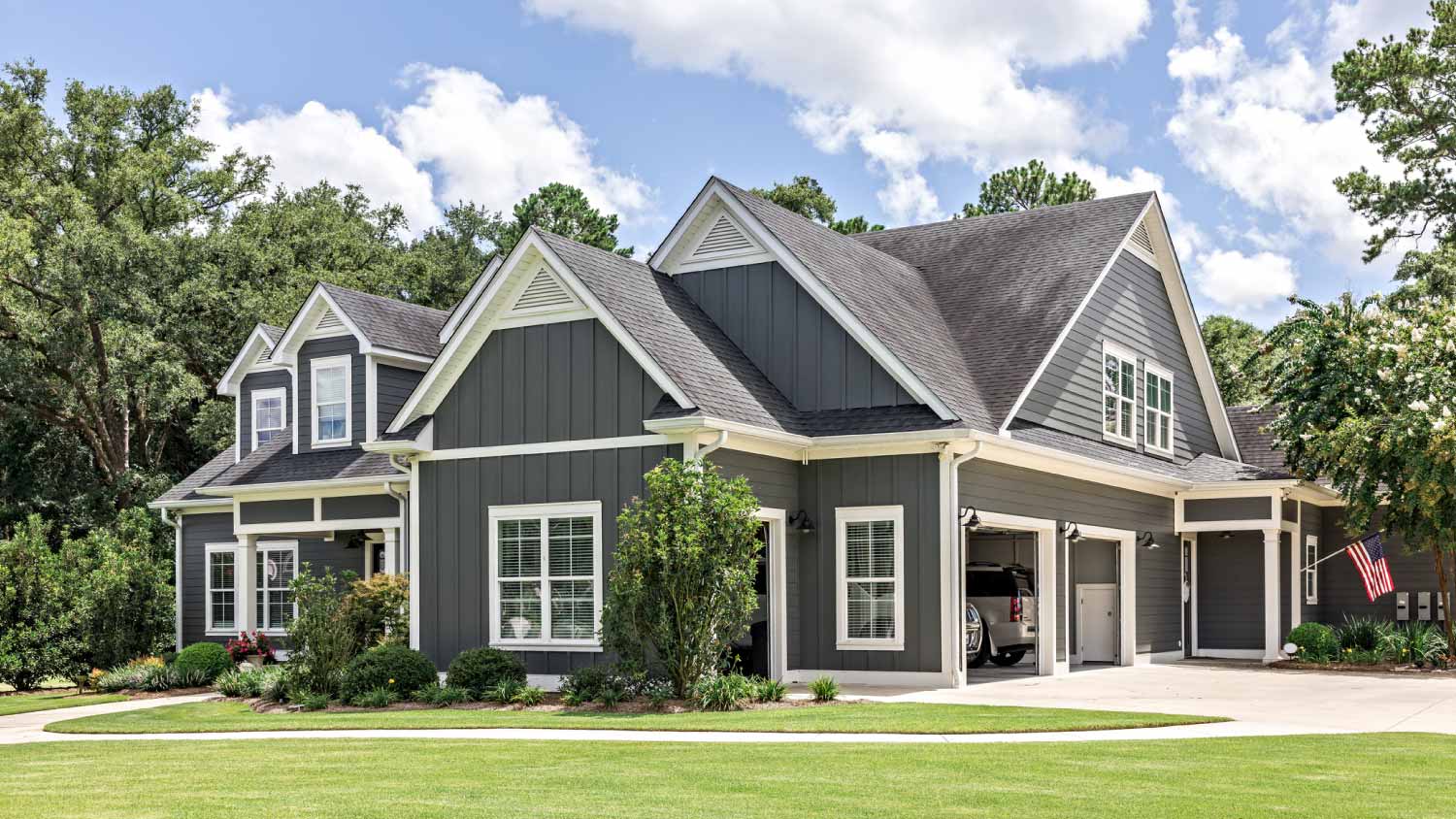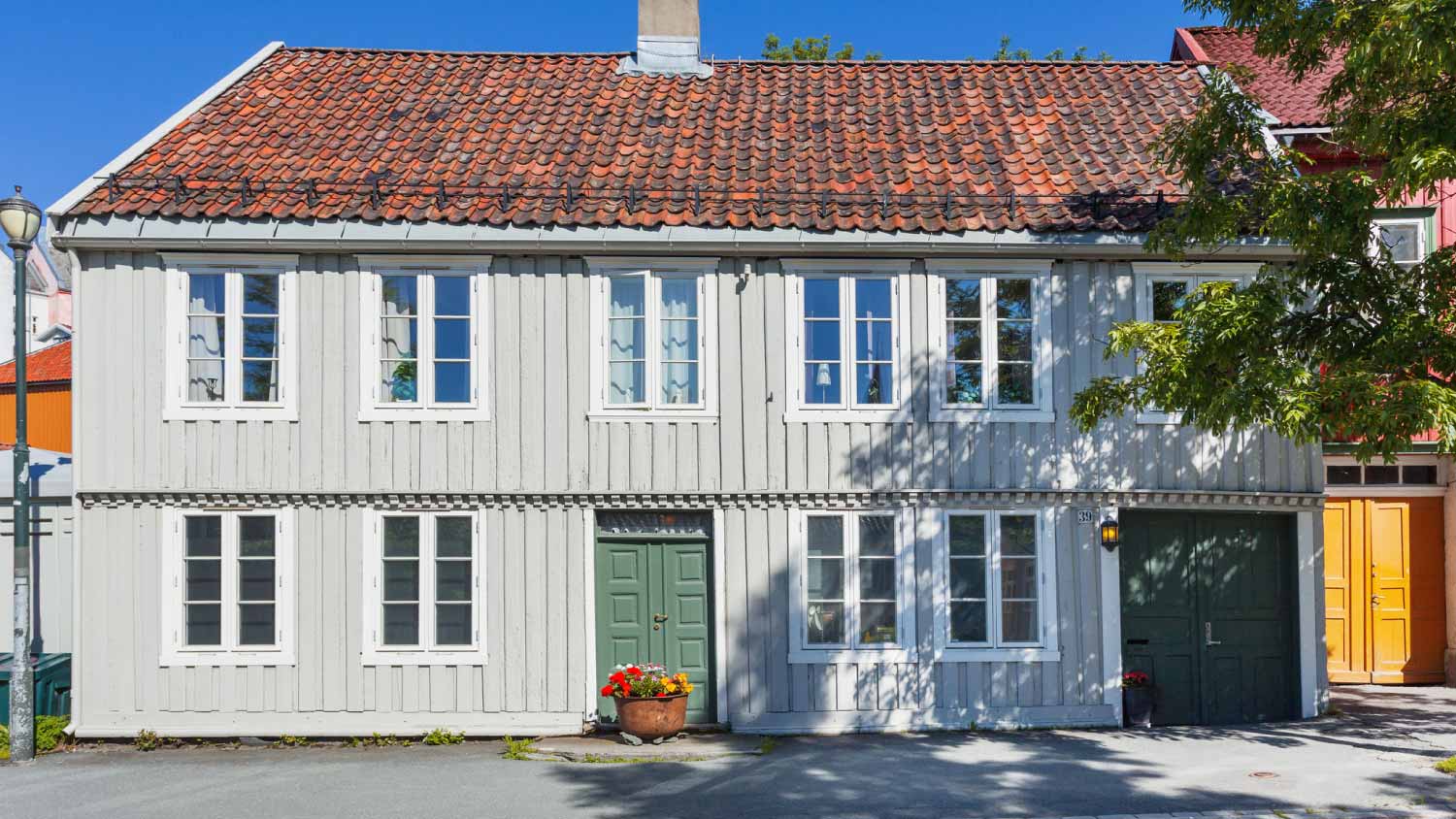
Thinking about replacing your siding? Our shou sugi ban siding cost guide will help you determine if this Japanese wood siding is within your budget.
Show off your home’s good side


You can identify what kind of siding you have by look and feel.
Knowing what kind of siding is on your house can help with proper maintenance, repair, and replacement.
If you can’t identify your siding, a siding pro can help.
Buying a home often means working with previous owners' decisions. When it comes to your siding, you might not even know what kind of siding you have, which can cause issues when it comes to maintenance and repair. Use our guide to identify siding so you can have confidence knowing what kind of siding is installed on your house.

Knowing what type of cladding or siding you have is important so you can be sure you’re maintaining it properly in order to get the longest usage possible and to keep it looking and performing its best. It will also be necessary if you need to repair your siding or have a partial siding replacement after damage.
Once you’ve identified what kind of siding you have, it might be worthwhile to order some extra of the exact siding if there isn’t any left over from installation. This can help you avoid problems with discontinued siding if you need to partially replace damaged siding.

You can identify most kinds of siding by look or feel. Once you know the differences between common types of siding, it’ll be a straightforward task to figure out what’s on your house.
Vinyl siding is the most common type of siding in the US, and it’s available in a wide range of styles, from horizontal lap siding to vertical board and batten. Vinyl siding feels like rigid plastic and will flex when you push on it and snap back to its original shape when you release it. Vinyl siding may also show dents, cracks, or fading, which makes it easy to identify.
Fiber cement is a newer siding material that’s gaining in popularity due to its durability and easy maintenance. This material is made of a mixture of cellulose fibers, cement, and sand, and is hard and dense to the touch without any give. Fiber cement can look like other siding, including wood planks and wood shakes or shingles, but up close, you’ll be able to tell it’s not the real thing.
Aluminum siding is one of the easiest materials to identify because, well, it looks like metal. You’ll notice a metallic sound when you tap on it, and you may also see small dents or dings on the surface. Aluminum siding is lightweight and may or may not be painted.
Wood siding was the most common type of siding before newer materials like vinyl and fiber cement were widely available, so it’s still found on many houses across the country. You’ll be able to see the wood grain and knots, and feel the wood texture. You’re also more likely to see damage on wood siding, since it needs to be routinely maintained to prevent rot, mold growth, and splitting.
Engineered wood has the look of real wood but is made from wood fibers and resin. It has a harder, more uniform feel than natural wood, and when you closely examine it, you’ll be able to see that it’s not real wood. Engineered wood is less prone to damage and requires less upkeep than real wood, so it’s more likely to have a consistent, unblemished appearance.
Stucco has a very distinctive appearance due to its mix of cement, lime, sand and water. Real stucco is durable and hard to the touch, and if you knock on it, it’ll sound solid. The stucco itself may be colored, or it can be painted as well.
Synthetic stucco mimics the look of real stucco but is less expensive than the real deal. This material is installed over foam insulation boards, so when you knock on it, it’ll sound hollow. You may also notice punctures in the surface, as synthetic stucco isn’t as hard or durable as real stucco.

If you’re still unable to determine what kind of siding you have, a local siding repair pro can help you identify it and give you recommendations for maintenance to keep it in good shape. If you need repairs or partial replacement, hire a siding contractor who specializes in the type of siding you have so you can be sure the job is done right.
From average costs to expert advice, get all the answers you need to get your job done.

Thinking about replacing your siding? Our shou sugi ban siding cost guide will help you determine if this Japanese wood siding is within your budget.

Concrete log siding costs more than traditional wood but requires less maintenance. Learn about pricing and upkeep costs to see if it’s a fit for your home.

Cedar siding is expensive, but it’s beautiful, timeless, and adds insulation to your home. Use this cedar siding cost guide to see what your project will total.
.jpg?impolicy=leadImage)
Stucco that isn’t waterproofed leaves your home vulnerable to moisture damage. Learn four ways to waterproof stucco for the most protection.

Hiring the right siding contractor can make this project go smoothly. Learn how to hire a siding contractor, what to ask, and what red flags to look for

The siding style you choose can enhance your home’s exterior aesthetics and curb appeal. Explore the differences between lap siding and board and batten.